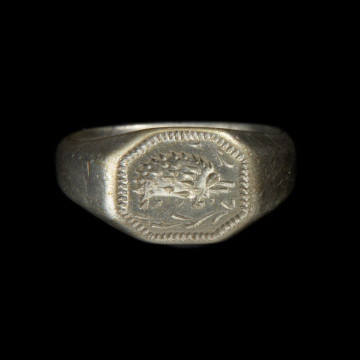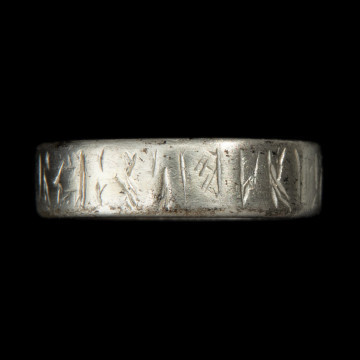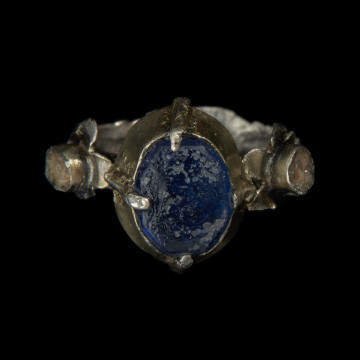
Signet ring with hedgehog
przełom XIV i XV wieku
National Museum in Szczecin
Part of the collection: Set of archaeological relics found in the Lublin Region
The described monument was discovered in the village of Sadurki, in the Puławy poviat, in 1969. During fieldwork, a farmer unearthed many bones, pottery, and stones. The museum staff that came to the site concluded that they were dealing with objects attributed to the Funnell Beaker culture, whose representatives inhabited this area about 5 thousand years ago. During the research it turned out that the farmer had accidentally come across a tomb of this culture, and in the furnishings, there were two vessels and an amber bead of interest.
The beautiful ornament could have found its way to the area of today's Lublin region, i.e. quite far from the sea, in two ways - as raw amber, which was processed on the spot to give it the desired form, or as a finished product.
And how was amber processed to make such an ornament?
First, two points were marked on both sides of the amber, where the centre of the hole was to be, and then they were drilled with an arch auger (for more on the use of this technique see the description of the 530-A-ML monument). The holes were drilled with flint or bone drills until they were joined together. In the next stage the lump of amber was given the expected shape by working its external surface with a flint tool. The piece of amber held in the hand was turned and at the same time the edges were cut with a flint blade until the desired effect was achieved.
Author / creator
Dimensions
cały obiekt:
Object type
ornament
Technique
drilling
Material
amber
Creation / finding place
Owner
The National Museum in Lublin
Identification number
Location / status

przełom XIV i XV wieku
National Museum in Szczecin

przełom XIV i XV wieku
National Museum in Szczecin

National Museum in Szczecin
DISCOVER this TOPIC
National Museum in Szczecin
DISCOVER this PATH
Educational path